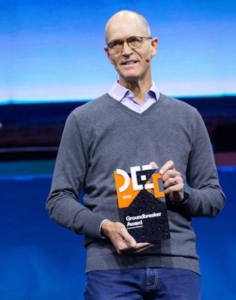
Charles Nutter remembers when, working as a Java architect, he attended a conference and saw the Ruby programming language for the first time. And he was blown away. “I was just stunned that I understood every piece of code, every example, without knowing the language at all. It was super easy for me to understand the code.”
As a Java developer, Nutter began looking for an existing way to run Ruby within a Java runtime environment, specifically a Java virtual machine (JVM). This would let Ruby programs run on any hardware or software platform supported by a JVM, and would facilitate writing polyglot applications that used some Java and some Ruby, with developers free to choose whichever language was best for a particular task.
Nutter found the existing Ruby-on-JVM project, JRuby. However, “it had not been moving forward very quickly. It had been kind of stalled out for some years.” So, he became involved, helping drive support for a popular web application framework, Ruby on Rails, to run within a JVM.
“We made it work,” says Nutter. “In 2005 and 2006, we got Rails to run on top of the JVM—and it was the first time any major framework from off the Java platform had ever been run on top of the JVM.”
Want to be like Nutter someday? His career advice is direct: Contribute to an open source community, even if it’s a little daunting, and even if some people in that community are, well, rude to newcomers.
“Don’t be afraid to get out into the open source community,” Nutter says. “Get out into the public community, do talks, submit bugs, submit patches. It’s going to be discouraging, and there’s a lot of jerks out there that will scare you away. Don’t let them. Get into the heart of the community and don’t be afraid to help contribute or ask questions.”
For his successful coleadership of JRuby during more than a decade, and for his broader leadership in the software industry, Nutter was recently honored with a Groundbreaker Award. The award was presented at Oracle Code One in San Francisco, where we had a long chat. Read what we talked about in my article for Forbes, “A Java Developer Walks Into A Ruby Conference: Charles Nutter’s Open Source Journey.”

